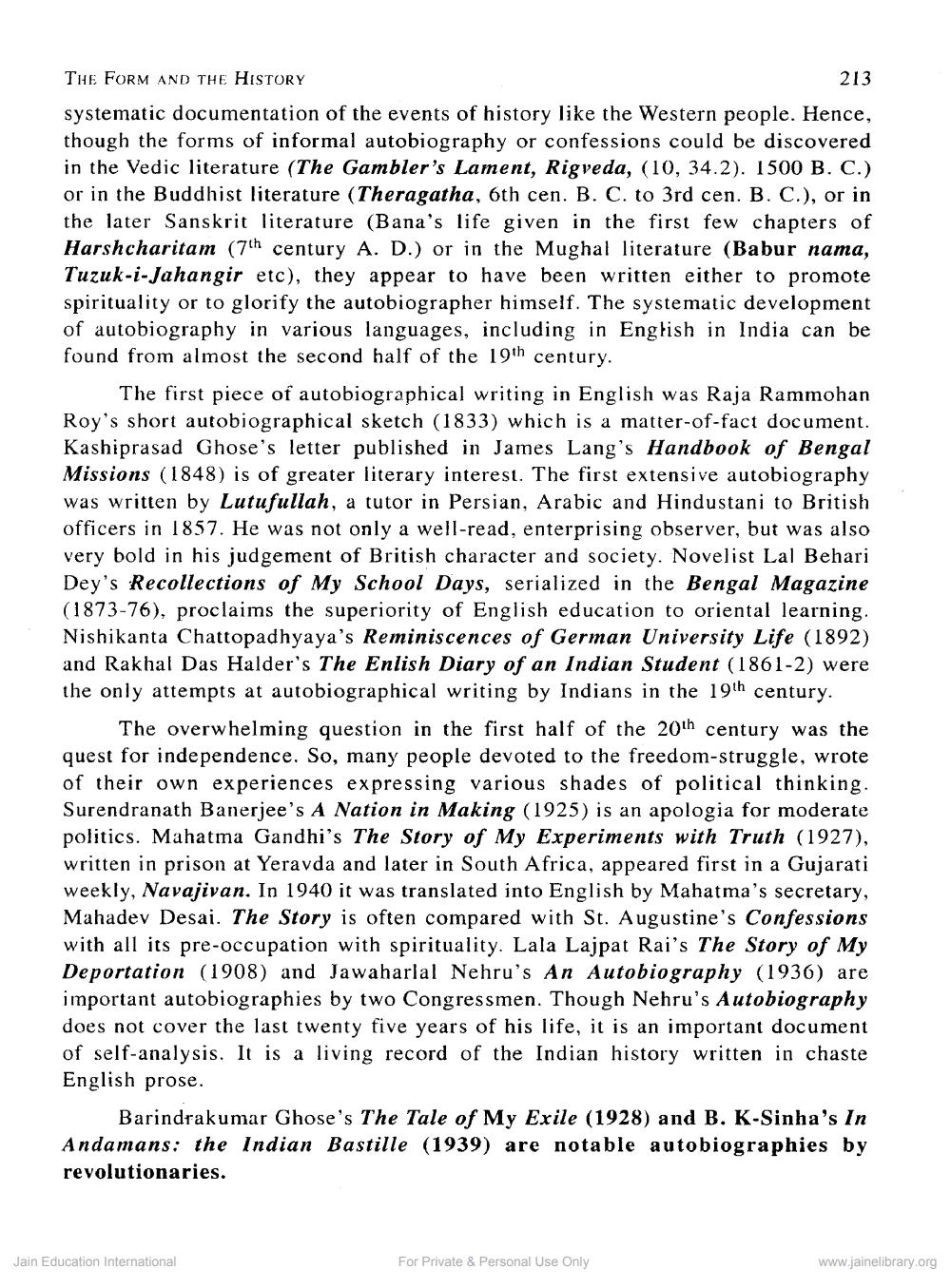________________
THE FORM AND THE HISTORY
213
systematic documentation of the events of history like the Western people. Hence, though the forms of informal autobiography or confessions could be discovered in the Vedic literature (The Gambler's Lament, Rigveda, (10, 34.2). 1500 B. C.) or in the Buddhist literature (Theragatha, 6th cen. B. C. to 3rd cen. B. C.), or in the later Sanskrit literature (Bana's life given in the first few chapters of Harshcharitam (7th century A. D.) or in the Mughal literature (Babur nama, Tuzuk-i-Jahangir etc), they appear to have been written either to promote spirituality or to glorify the autobiographer himself. The systematic development of autobiography in various languages, including in English in India can be found from almost the second half of the 19th century.
The first piece of autobiographical writing in English was Raja Rammohan Roy's short autobiographical sketch (1833) which is a matter-of-fact document. Kashiprasad Ghose's letter published in James Lang's Handbook of Bengal Missions (1848) is of greater literary interest. The first extensive autobiography was written by Lutufullah, a tutor in Persian, Arabic and Hindustani to British officers in 1857. He was not only a well-read, enterprising observer, but was also very bold in his judgement of British character and society. Novelist Lal Behari Dey's Recollections of My School Days, serialized in the Bengal Magazine (1873-76), proclaims the superiority of English education to oriental learning. Nishikanta Chattopadhyaya's Reminiscences of German University Life (1892) and Rakhal Das Halder's The Enlish Diary of an Indian Student (1861-2) were the only attempts at autobiographical writing by Indians in the 19th century.
The overwhelming question in the first half of the 20th century was the quest for independence. So, many people devoted to the freedom-struggle, wrote of their own experiences expressing various shades of political thinking. Surendranath Banerjee's A Nation in Making (1925) is an apologia for moderate politics. Mahatma Gandhi's The Story of My Experiments with Truth (1927). written in prison at Yeravda and later in South Africa, appeared first in a Gujarati weekly, Navajivan. In 1940 it was translated into English by Mahatma's secretary, Mahadev Desai. The Story is often compared with St. Augustine's Confessions with all its pre-occupation with spirituality. Lala Lajpat Rai's The Story of My Deportation (1908) and Jawaharlal Nehru's An Autobiography (1936) are important autobiographies by two Congressmen. Though Nehru's Autobiography does not cover the last twenty five years of his life, it is an important document of self-analysis. It is a living record of the Indian history written in chaste English prose.
Barindrakumar Ghose's The Tale of My Exile (1928) and B. K-Sinha's In Andamans: the Indian Bastille (1939) are notable autobiographies by revolutionaries.
Jain Education International
For Private & Personal Use Only
www.jainelibrary.org




